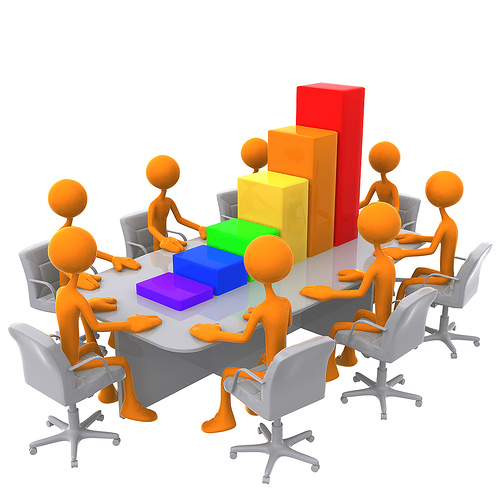
I often hear people discuss how they can make their meetings more effective and the use of technology is usually mentioned. However, there are some traditional methods of planning and executing meetings that seem to be left out of the discussion…
- Post an agenda at least 24 hours before the meeting. I am more inclined to attend a meeting, especially a conference call, if I have a copy of the agenda prior to the meeting. Many people underestimate the importance of an agenda but it sets the tone of the meeting. It lets the participants know what will be covered, if they need to be prepared to present and allows for thought on the topics so that intelligent comments and questions can be provided. Most agendas will also provide a recap of what was covered in the previous meeting to refresh the attendees memory of where things left off.
- Set a start time and end time for the meeting. In today’s business and social environment, there are a lot of demands placed on a person’s time. This is especially true for some of the more sought after professionals that you may want involved with your organization and high level executives that may attend your meeting. They will be less likely to remain engaged in the group’s activities if they feel that their time is being wasted or mismanaged. If you are leading the meeting, be conscious of the time allotted to each item on your agenda and control the conversation by encouraging everyone to stay on the subject.
- Assign people to committees. If your group has a lot of information to be covered or a large project to work on, assign members of the group to committees and request that the chair or co-chair make a presentation on behalf of the committee. There are some decisions that a committee can make about a project that the entire group does not have to be a part of. The committee should report on those decisions and allow the group to discuss and/or approve, if necessary. I remember being a part of a group that was planning a big event. Everyone in the group was involved in every detail of the planning, which eventually became excruciating, especially when we devolved into discussing how much ketchup should be purchased for the sale of the hot dogs. Looking around the room, I noticed that most people were doodling on their agenda or texting on their phone.
- Hold people accountable. Some groups meet for the sake of having a meeting. I honestly don’t believe that they have any intentions of executing any of the items on their agenda because each meeting is a rehash of the items from the previous meeting. When tasks are assigned or committees are delegated, they should be held accountable to carrying out their duties. If the attendees begin to notice that there is no accountability, you are guaranteed to see a decline in productivity. It may not be necessary to scold those who proved derelict at completing their task but asking them to explain why it wasn’t accomplished is a conversation that most performers don’t want to have. If you start to see a trend with one person or group consistently underperforming, that is an indication that a change needs to be made.
- Provide a follow-up after the meeting. Generally, there is a lot of information discussed in effective meetings. Providing the attendees with a follow-up at least two business days after the meeting will remind them of the action that needs to be taken, provide information about who is doing what in case they need to be in contact with that person and details about the next meeting. It also is a measure of your group’s progress. Failure to provide this documentation often leaves the impression that there is no accountability. Coupled with not providing an agenda prior to the meeting will often cause your members to only think about the meeting during the meeting.
I hope these tips help you plan more effective meetings…

Reblogged this on jemima ♥ and commented:
How to Manage Meetings
LikeLike
Thanks for sharing!
LikeLike